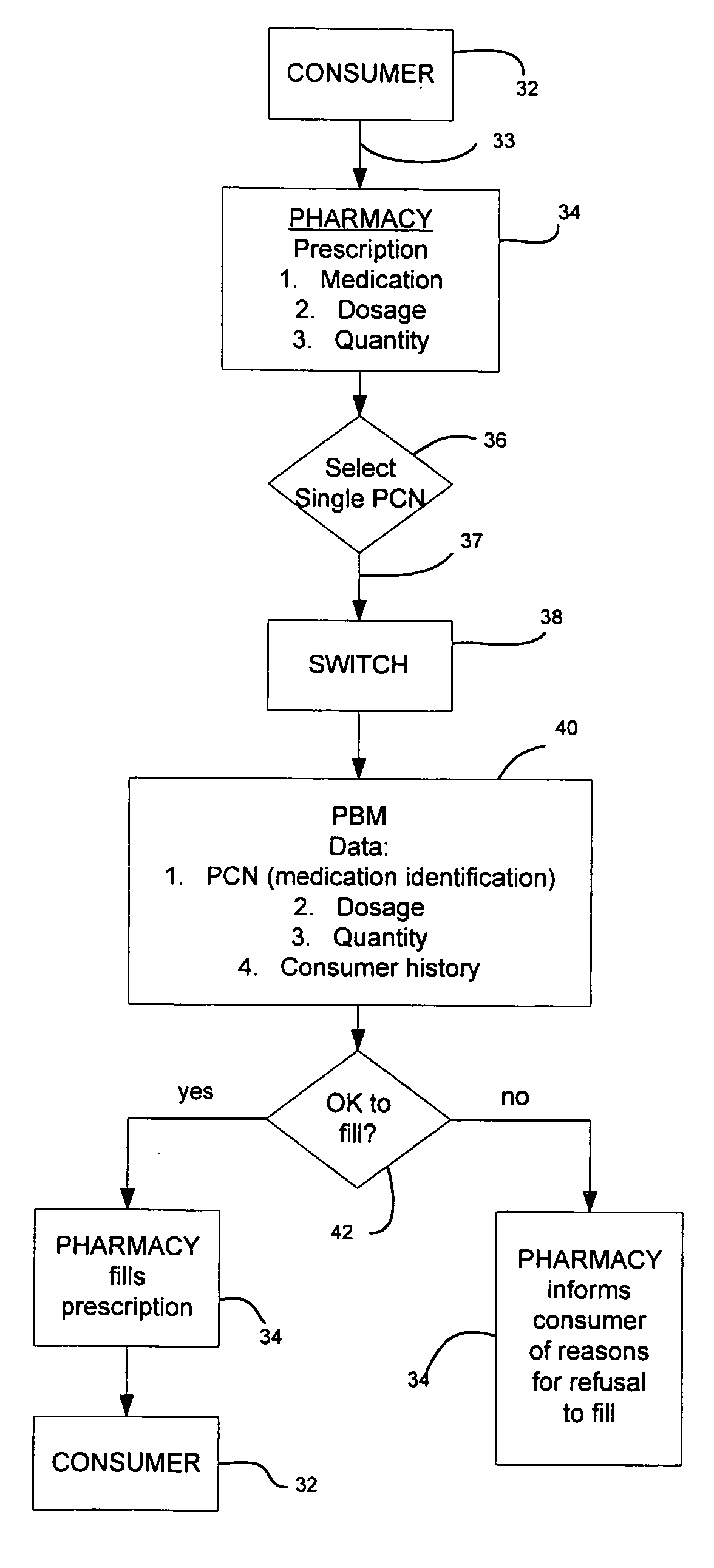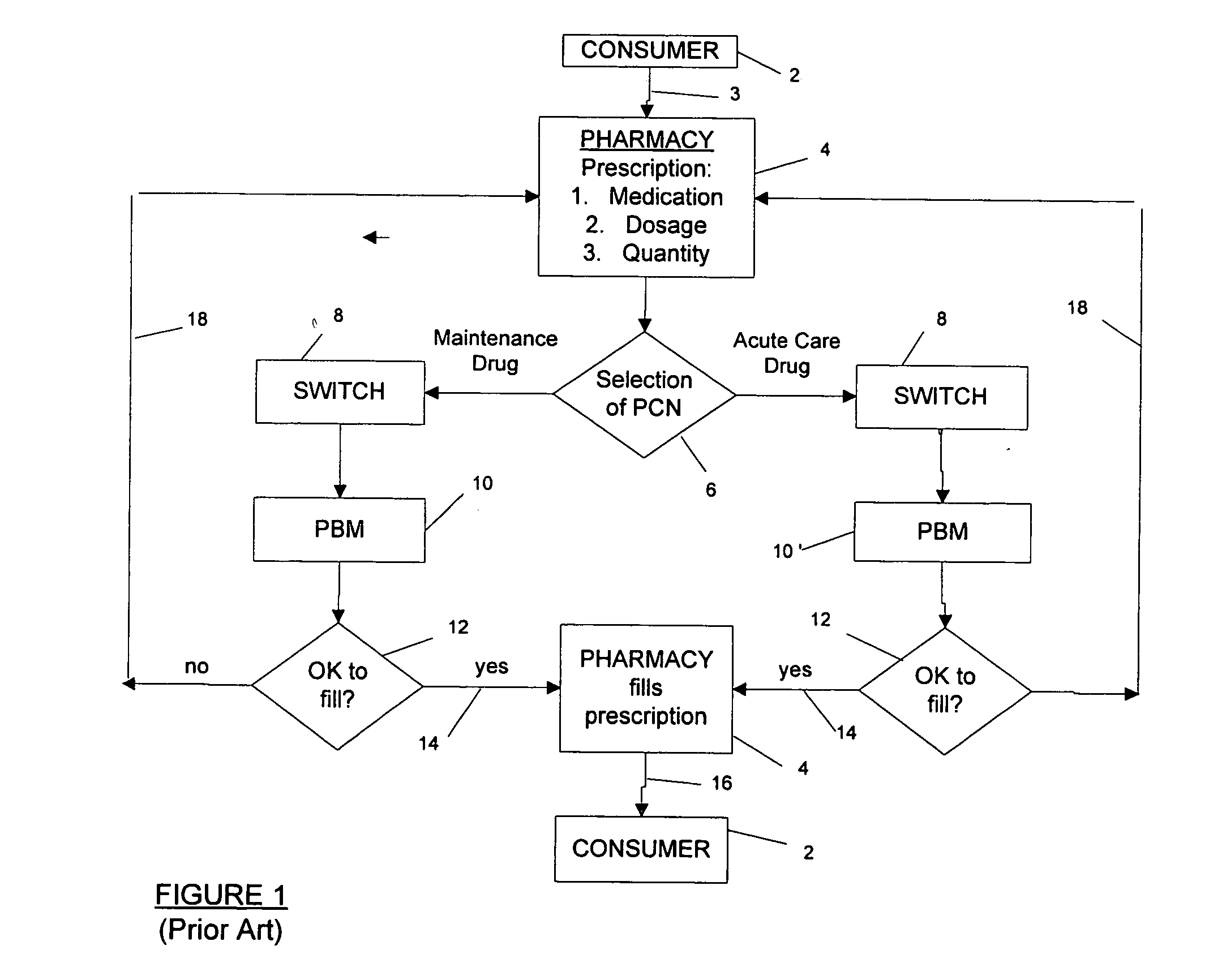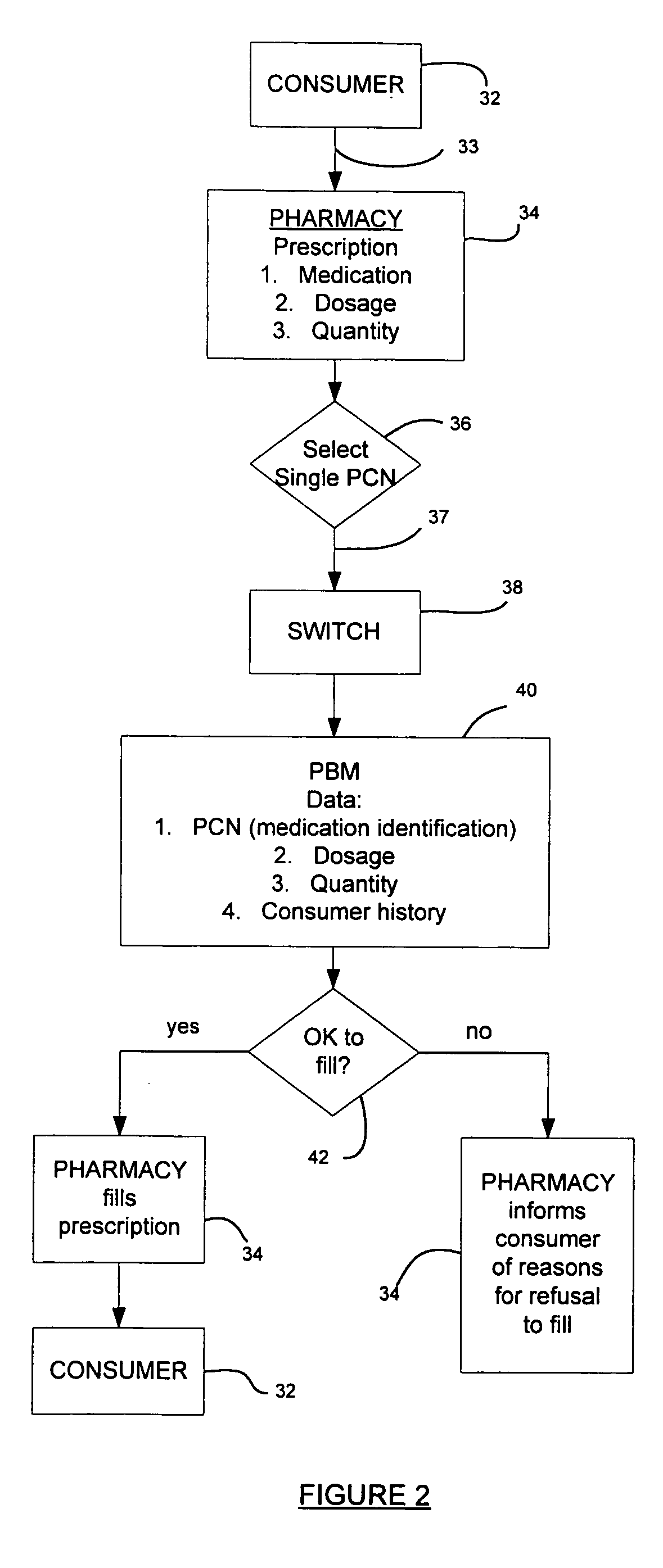Method for providing consumer choice and equalizing pharmacy provider availability in prescription medication dispensing plans
a technology of pharmacy provider and consumer choice, applied in the field of prescription payment benefits, can solve the problems of affecting the ability of retail pharmacies to provide local retail services, deprived of income, and complicated analysis of mail order pharmacies versus retail pharmacies for maintenance medications, etc., to save payer time and confusion, save the effect of greater utilization and saving payer
- Summary
- Abstract
- Description
- Claims
- Application Information
AI Technical Summary
Benefits of technology
Problems solved by technology
Method used
Image
Examples
Embodiment Construction
[0019] When a consumer receives a prescription for medication from a physician, the consumer either goes to a retail pharmacy or utilizes mail order to have the prescription filled. If utilizing a retail pharmacy, the consumer walks into the pharmacy and presents the prescription to a pharmacist or pharmacy staff member. The pharmacy enters the prescription into a computer, which sends the information to a telecommunications switch, or routing, company. Next, the switch company sends the information to the correct PBM with which the pharmacy has contracted for the type of prescription. The PBM determines the benefits the consumer is eligible for, i.e., whether the prescription is eligible for fulfillment based on the terms of the payer plan that the consumer is under. The PBM reports back through the switch company to confirm the amount of medication the consumer is eligible for, copay amount if required, and certain safety messaging if appropriate. In most cases a prescription is a...
PUM
| Property | Measurement | Unit |
|---|---|---|
| time | aaaaa | aaaaa |
| time | aaaaa | aaaaa |
| time | aaaaa | aaaaa |
Abstract
Description
Claims
Application Information
 Login to View More
Login to View More - R&D
- Intellectual Property
- Life Sciences
- Materials
- Tech Scout
- Unparalleled Data Quality
- Higher Quality Content
- 60% Fewer Hallucinations
Browse by: Latest US Patents, China's latest patents, Technical Efficacy Thesaurus, Application Domain, Technology Topic, Popular Technical Reports.
© 2025 PatSnap. All rights reserved.Legal|Privacy policy|Modern Slavery Act Transparency Statement|Sitemap|About US| Contact US: help@patsnap.com



